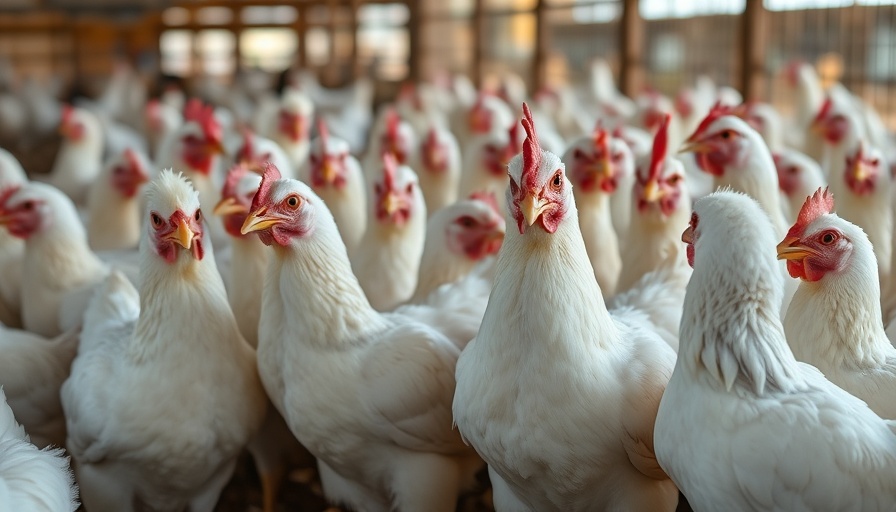
Unexpected Outbreak: Bird Flu's New Territory
In a surprising turn of events, the highly pathogenic avian influenza, known as H5N1, has recently spread to dairy cows in the Texas Panhandle. This alarming development, occurring in early 2024, signifies not just a biological anomaly but also a potential catalyst for a pandemic. As Thomas Friedrich, a virologist from the University of Wisconsin–Madison, aptly put it, "This is how pandemics start." With H5N1 already classified as a panzootic, or animal pandemic, the implications for human health present a pressing concern.
The Widespread Impact of H5N1
The ramifications of H5N1 are staggering. It has affected a variety of mammals across six continents, leaving a trail of economic distress particularly in the poultry and dairy sectors. As of 2025, H5N1 has emerged in at least 17 states within the U.S., with no other country reporting infection in cows. The ongoing outbreak has not only diminished the supply of poultry products, but it has drastically influenced grocery prices—most notably, the unexpected surge in egg prices.
Historical Context: A Long-Standing Concern
Bird flu's existence dates back nearly three decades, presenting unique challenges to scientists and policymakers alike. H5N1's journey from wild birds to domestic populations raises questions about zoonotic diseases, which can jump from animals to humans. Since 2003, the virus has infected over 960 individuals globally, with approximately half of those cases resulting in fatalities. The emergence of the first U.S. death in 2025 is a grim reminder of the virus's potential threat.
What Makes H5N1 So Different?
While H5N1 shares similarities with other influenza A viruses, it displays significant genetic diversity that can fuel mutations. If two different flu viruses infect the same cell, they can exchange genetic material, leading to new viral strains. This capability emphasizes the unpredictable nature of H5N1 and raises concerns about its potential to adapt to more easily infect humans. The virology behind H5N1—comprised of eight genetic segments highlighting diverse proteins—present a complex puzzle for scientists attempting to determine its next moves.
Current Assessments from Health Authorities
Despite the concerning trends, both the CDC and WHO maintain that the immediate public health risk from H5N1 in humans is low, largely due to the virus's inability to transmit easily between individuals. However, experts warn that the situation can change rapidly. According to Michelle Wille from the WHO Collaborating Centre, "Every time we think we know what’s going to happen, it does something totally unexpected." This unpredictability underlines the importance of ongoing surveillance and research.
The Path Forward: Awareness and Preparedness
As H5N1 continues its encroachment into non-avian species, raising awareness is crucial. Homeowners and agricultural workers must remain vigilant, particularly those who have frequent contact with livestock. Understanding the flu's transmission and potential consequences will empower communities and individuals to take proactive measures to protect both public health and local economies.
Community Action: Your Role in Prevention
Promoting education and preparedness can significantly impact managing potential outbreaks. Reach out to local agricultural organizations for resources on safe animal husbandry practices. Additionally, it's essential to stay informed about vaccinations and safety protocols regarding poultry and livestock management. Together, collective awareness can form a strong defense against this evolving threat.
Conclusion: Staying Informed and Prepared
In summary, the emergence of H5N1 in dairy cows marks a pivotal moment in public health. Its potential to transform into a serious human health threat cannot be ignored. Whether you’re a homeowner, business owner, or farm worker, staying informed is key to navigating these tumultuous waters. As the situation evolves, prioritize safety and preparedness, fostering a community bond that emphasizes health and well-being.
 Add Row
Add Row  Add
Add 



Write A Comment